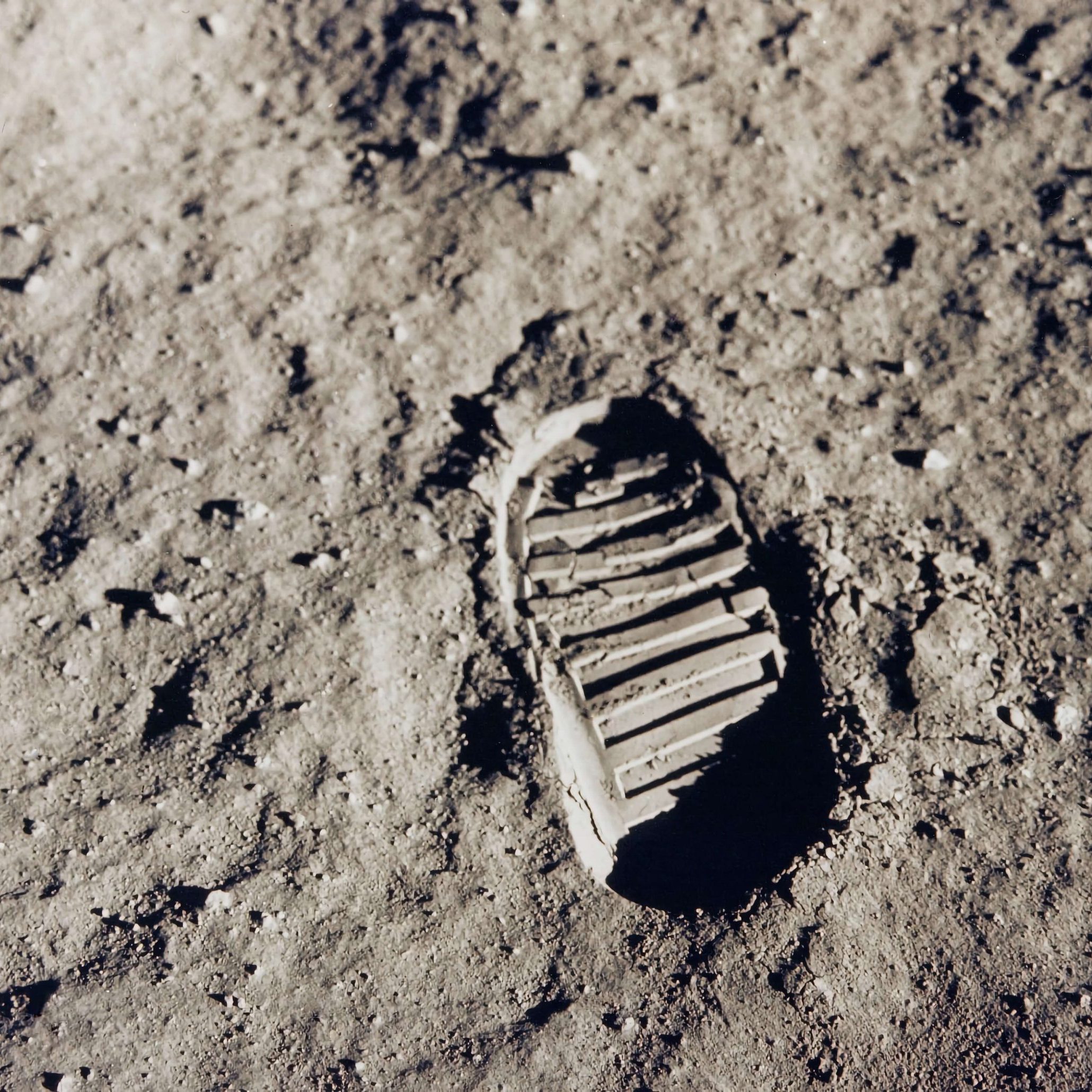
AI-generated summary
The space sector is experiencing a resurgence of public interest and commercial activity, marked by recent private flights from companies like SpaceX, Virgin Galactic, and Blue Origin, as well as NASA’s Artemis program aiming to return humans to the Moon. Visionaries like Elon Musk envision a future where humans become a multi-planetary species, sparking discussions about a burgeoning “space economy” and even a “Lunar economy.” To explore these developments, a #FutureTalks event featured experts Jeffrey Manber, a pioneer in commercial space ventures and CEO of NanoRacks, and Charles Bolden, former NASA administrator and astronaut. They shared insights into the evolving business landscape of space, emphasizing a return to entrepreneurship reminiscent of the early 20th century when private visionaries led space exploration before government agencies dominated post-World War II.
Key trends include the democratization of space, driven by technological advances like miniaturized, cost-effective satellites and a growing talent pool, particularly in Europe, fostering numerous startups offering innovative satellite-based services. The next frontier is the emergence of private space stations within the next decade, transitioning space infrastructure from government-led to commercially operated hubs, with eventual in-space manufacturing reducing costs further. While debates continue on human presence in space—whether for colonization or off-Earth industrialization—both experts agree on the need to promote space’s potential benefits. They also highlight future opportunities like space-based energy and stress the importance of STEAM education to supply the sector’s growing talent needs, underscoring that while Earth is resilient, life on it remains fragile and must be protected.
Two of the world's leading experts: Jeffrey Manber and Charles Bolden, offer us insights into trends in the space sector
The space sector is again making headlines and arousing public interest: not only with the recent SpaceX, Virgin Galactic and Blue Origin flights, which represent the first commercial trips into space, but also with the recent tests of NASA’s SLS (Space Launch System) rocket that will take man back to the Moon, under the Artemis program.
There is already talk of a “space economy” and “Lunar economy“. Some, like Elon Musk, even dare to speak of a “Martian economy“. Musk’s vision is that humans will be a multi-planetary species.
But what is the state of the art in the business of space? Where do opportunities lie? What are the major trends?
We held a #FutureTalks with Jeffrey Manber, considered a pioneering entrepreneur in making space-related economic opportunities a reality, and with Charles Bolden, trustee of the Bankinter Innovation Foundation and head of NASA under the Obama administration.
If you were unable to attend the event live, we invite you to watch it, as these two experts provide us with very interesting clues about the space industry’s future:
Before summarizing some of the most interesting ideas and reflections that Jeffrey and Charles left us with, we would like to share with you some relevant facts about their careers:
Jeffrey Manber’s career path
Jeffrey Manber is the founder and CEO of NanoRacks, the first company in the world to own and market its own hardware, software and services for the International Space Station (ISS). He has overseen the deployment of more than 300 payloads to the ISS, and the deployment of 64 satellites into low Earth orbit (LEO).
He recently sold NanoRacks to Voyager Space and is now President of Voyager Space’s International and Space Station business, which markets services from the International Space Station to commercial customers and for educational, institutional, and industrial research.
He is also the co-founder and chairman of the board of StarLab Oasis, a Space AgriTech company whose goal is to discover innovations that will help green the Earth’s driest regions using aerospace innovations.
Jeffrey is, first and foremost, a visionary where commercial opportunities in space are concerned. Indeed, in the early 1990s, he succeeded in integrating the Russian industry into major space programs, including the International Space Station. And in 2000, he succeeded in launching the first privately funded manned mission into orbit. That mission was a milestone in what we call the commercialization of space because it was:
– the first commercially funded spacewalk,
– the first mission without government funding, and
– the first explorers paid for entirely by private enterprise.
Charles Bolden’s career path
In his long professional career, this Marine with more than 6,000 flight hours, who reached the rank of Major General, became an astronaut in 1981. Charles has commanded several missions in space, including the shuttle Columbia, where he was the pilot of the STS-61-C and STS-31 missions.

As the top NASA official during Barack Obama’s presidency, in 2015 he presented NASA’s plans for a manned trip to Mars.
Reflections on the future of space
Below, we set out some of the ideas shared by Jeffrey and Charles in this #FutureTalks:
1.- The return to entrepreneurship in space: For Jeffrey, there is a return to the origins of space exploration. What he calls a closing of the circle, 100 years later.
At the beginning of the 20th century, all space-related activities were led by entrepreneurs, dreamers, scientists, and aeronautical professionals, often supported by private investors and patrons. With another fundamental characteristic: it was an international movement that brought together the best talents of the time to propose projects and try to carry them out.
Following World War II, space became a strategic field for governments and the public sphere took over, with only government agencies able to carry out activities in this field. This trend has lasted for more than half a century.
The return to origins, i.e. the industry being led by entrepreneurs, has been taking place for about 20 years, with the entry of entrepreneurs and private capital into a sector that can today be considered open to the public. In fact, there are more than 100 companies in the world that are developing space vehicles, including the Spanish company PLD Space.
PLD Space is a European reference in the development of reusable rockets and is currently working on both a suborbital launch vehicle (MIURA 1) and an orbital launch vehicle (MIURA 5). As an idea of the health of the sector, PLD recently closed a Series B investment round of 25 million euros.
2.- Democratization of space
This openness to the private sector is making it possible for solutions to be offered and projects to be proposed that would have been unthinkable a few years ago.
This openness to the private sector is making it possible for solutions to be offered and projects to be proposed that would have been unthinkable a few years ago.
On the one hand, there is technological innovation: increasingly smaller satellites, cheaper to manufacture and put into orbit, with miniaturization of key equipment, such as high-resolution cameras developed by the also Spanish SATLANTIS, allow costs to be greatly reduced.
On the other hand, people, skills and talent: in a recent interview with the CEO of SATLANTIS, Juan Tomás Hernani, as part of our #FIBKVoices initiative, he spoke to us about the importance of human capital and talent. Europe has an opportunity to take the lead, as it has more than 3,000 engineers specialized in space, with an average age of 31, and very high growth rates of 50-80% year-on-year.
This contributes to the existence of smaller satellites, much cheaper to manufacture and launch, serving, among other things, to monitor the weather, track pollution, supervise and control urban developments, or detect disaster risks due to spills.
The existence of this ecosystem has given rise to a multitude of “space” startups that are able to offer services and solutions to third parties through the use of satellite data, which, by feeding artificial intelligence algorithms, are able, for example, to estimate tree biomass and carbon storage. The existence of venture capital funds specialized in this type of startups gives us an idea of the potential of this space subsector. One example is Space Capital, a venture capital firm that invests only in seed rounds in space startups.
3.- Next steps: A new era of private space stations is about to kick off
The next revolution in the space industry will affect destinations, as Charles and Jeffrey point out.
Today there are only two destinations: the International Space Station and China’s Tiangong space station, whose core module, Tianhe, was launched on April 29, 2021, followed by multiple manned and unmanned missions and two more modules to be launched in 2022.
Our experts predict that 5 to 10 years from now there will be 3 or 4 private stations where NASA and other government agencies and organizations will be just another customer.
This movement towards privatization and public-private collaboration is a virtuous circle, because as governments behave like customers, private investment will follow.
But let’s not kid ourselves: we are at the very beginning of this trend. For now, there are too many proposals and investors are still lacking. Gradually, a natural order will be established in terms of launches based on orbits and altitudes, to meet real business needs.
What will the process be like? According to experts, there will be two stages in the construction of stations:
A first stage where modules and payloads are built on Earth and then launched.
And a second stage, in 10 to 20 years’ time, when much of the module manufacturing will be possible in space, greatly reducing the cost of the whole process.
4.- Will there be people living permanently in space?
There is much debate surrounding the need and usefulness of humans in space, beyond engineering and research concerns. On the one hand, there are those like Elon Musk, who argue that the humanity’s future is as a multi-planetary species. On the other, there are those who think like Jeff Bezos, who says that the most polluting manufacturing and production processes ought to be taken into space, ridding the planet of pollution.
In any case, both experts agree that it is necessary to publicize and promote the full potential that space holds for humanity and how accessible projects, services and products are becoming.
5.- Some final thoughts
– Fields yet to be explored could represent a paradigm shift, for example in the provision of energy, which could be generated in space and transported to Earth.
– The STEAM teaching model must be promoted, because the aerospace sector will demand huge numbers of these profiles in coming years. Charlie tells us that, for example, NASA has more than 800 agreements in place with STEM education at all academic levels.
– Given the privileged perspective of a person who has seen the Earth from space, we close with a reflection by Charlie Bolden, which we find inspiring for raising awareness about environmental care and planetary diversity:
The Earth is not fragile. It is a planet that is billions of years old and will be here for billions of years to come. What is fragile is life on Earth and, more specifically, the human species.
If you’re interested in the space sector, be sure to check out this #FutureTalks:

Former NASA administrator. Founder & CEO Emeritus at The Charles F. Bolden Group LLC



